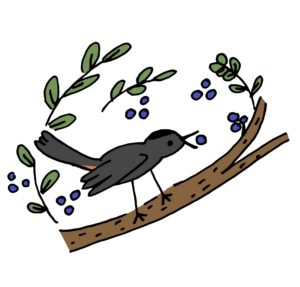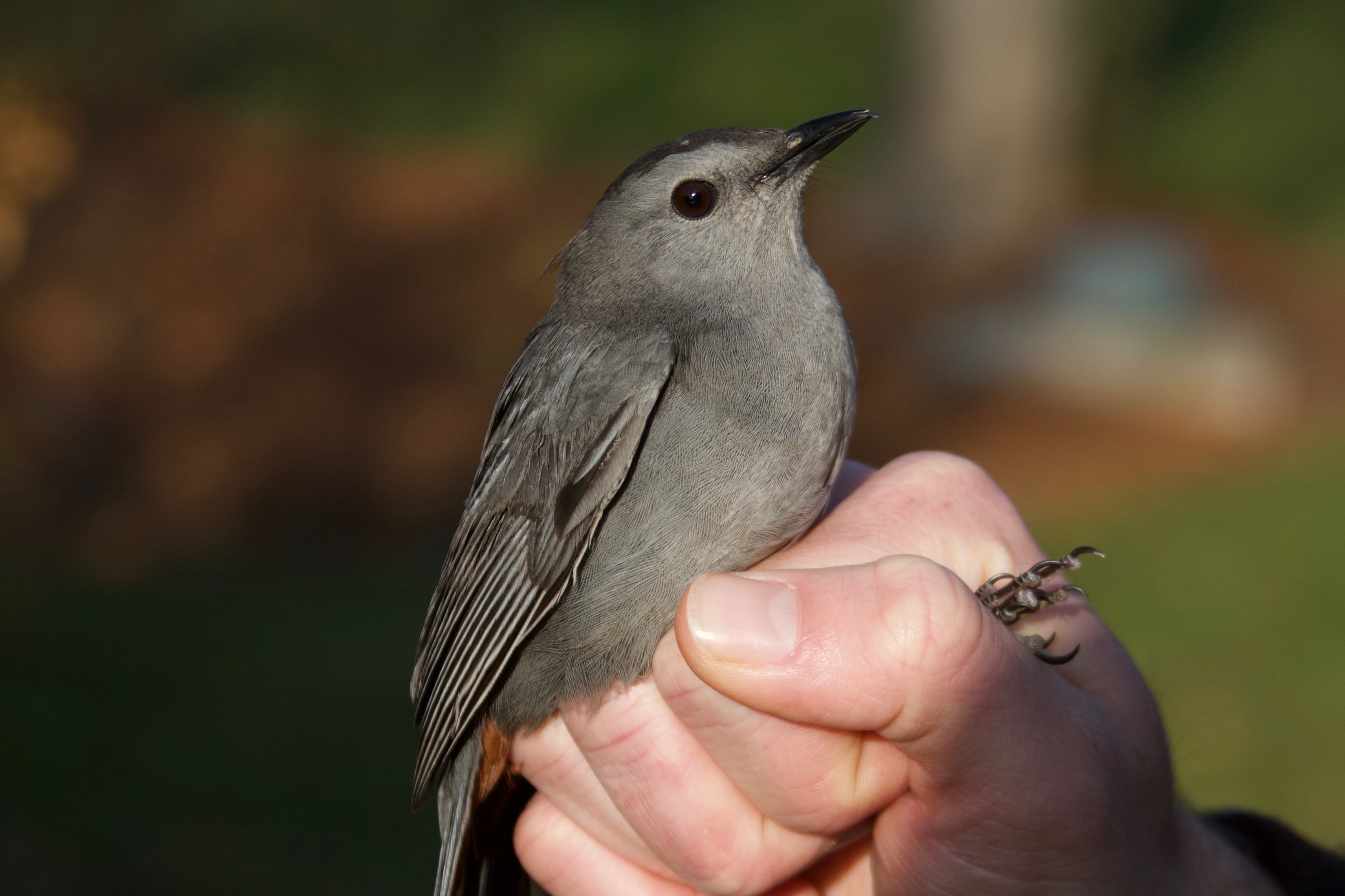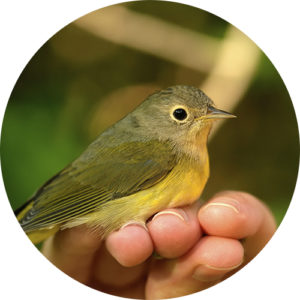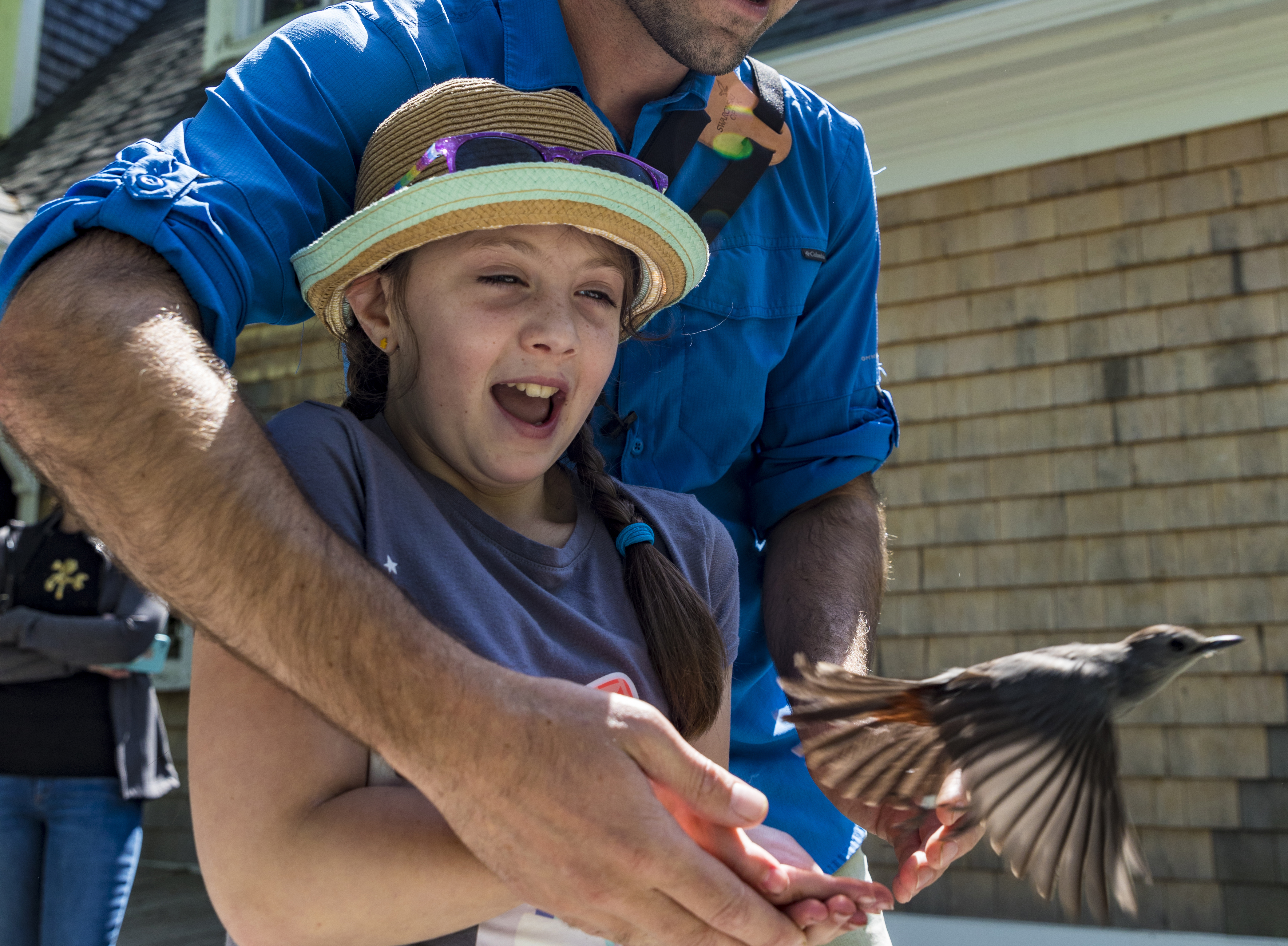
We returned to banding on Tuesday after a long holiday weekend. Luckily, some new birds had lingered over the weekend and we finished the week with 60 new birds banded, 62 recaptures processed, and two new species caught. This brings our season total up to 372 new birds banded, 232 recaptures processed, and 41 total species. Towards the end of the week, White Wood Aster (Eurybia divaricata) had bloomed in earnest and the clusters of many species of goldenrod had also begun to bloom, adding bright golden color to the net lanes and the Holmes Farm. The blueberry patches on the Holmes Farm are a hotspot for finding birds; every time you walk by, there’s a good chance of flushing a Gray Catbird, Song Sparrow, or American Robin gobbling up the blueberries as fast as they ripen.
On Tuesday, we noticed that the Shrub Lespedeza (Lespedeza bicolor) that occurs in a few places along the net lanes had bloomed. This plant is a non-native shrub from Asia in the Legume family. We aren’t quite sure how it became established at Manomet—it’s possible it migrated from the Manomet gardens or as a seed transported by a bird or a mammal. Later that afternoon, we caught a Brown Thrasher, one of our two new species for the week. We looked at several characteristics to age the bird and it turned out to be an adult. One of these characteristics was its eye color; this bird had a brilliant yellow eye with some orange. A young bird would have a muddier, grayish-yellow eye.





 Back to all
Back to all


